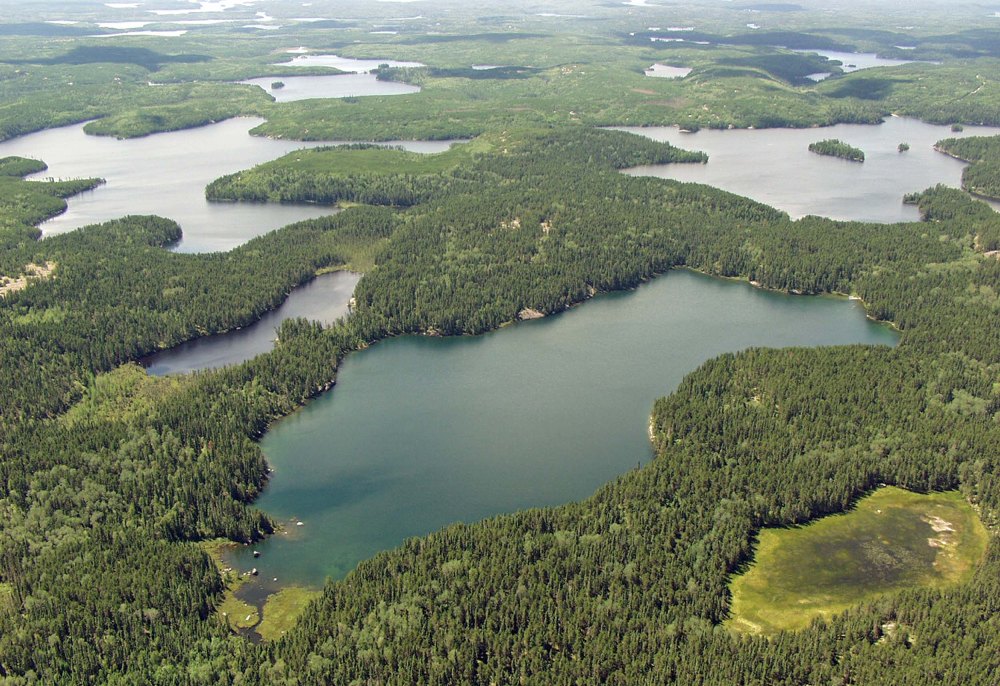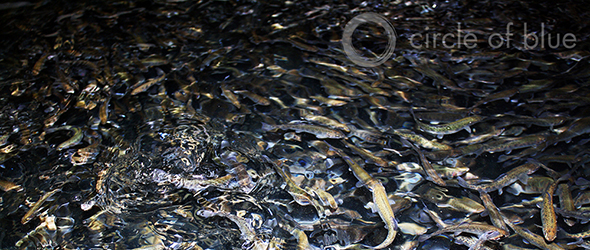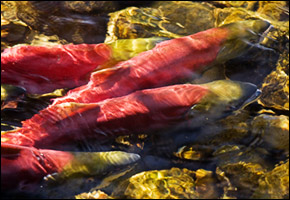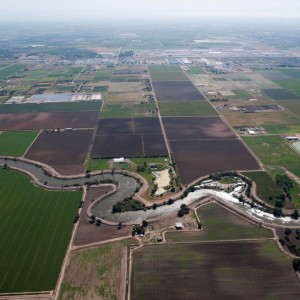Partnership Agreement Saves Canada’s Renowned Lake Laboratory
A legendary freshwater research facility in western Ontario has a new operator.

By Brett Walton
Circle of Blue
The Experimental Lakes Area, site of trailblazing research into the effects of acid rain and the cause of freshwater algae blooms, will not be closed, as might have happened under a 2012 budget-cutting proposal by Canada’s conservative government.
According to agreements signed April 1 with provincial and federal officials, the International Institute for Sustainable Development, a public policy think tank, will be the new headmaster of the renowned outdoor laboratory where some of the most important freshwater research of the last half century took place.
IISD will take over a role the federal government played since the Experimental Lakes Area was founded in 1968 but sought to relinquish two years ago. Government ministers argued that closing the facility would save at least $US 2 million per year and allow federal water research to focus on the oil industry.
–Vincent St. Louis, professor
University of Alberta
Government critics, however, saw another example of a right-wing attack on science. Since the Conservative Party came to power in 2006, entire research programs have been cut, scientists laid off, and libraries closed.
The new operating agreement at the Experimental Lakes Area gives the site fresh life. The agreement will broaden the scope of research at the ELA, a cluster of 58 lakes in western Ontario set aside for environmental inquiry. Rather than studies solely related to domestic fisheries, as was its mandate during federal control, the new ELA will be able to export its knowledge abroad.
“This agreement is very positive for freshwater research in general,” Matt McCandless, new executive director of the ELA, told Circle of Blue. “Now we can collaborate internationally. We can apply our freshwater expertise to other issues around the world – Lake Chad or Lake Victoria in Africa, for example.”
Building the Budget
Canadian researchers and colleagues around the world were aghast when the Canadian government announced in 2012 that it would no longer fund the ELA. The facility’s scientists consistently won top international awards, and its research was the foundation for a seminal 1991 treaty between Canada and the United States to halt acid rain.
“It’s unfortunate that the government let it go,” said Vincent St. Louis, a University of Alberta biological sciences professor who started conducting research at the lakes as an undergraduate in 1981. “They didn’t seem to understand the world treasure they had.”
But the new agreement gives the ELA more research freedom. Enough funding has been secured to keep the facility going but not to expand.
In total, the operating budget will be between $2.5 million and $3 million, McCandless said. The government of Ontario will contribute $10 million over five years. The federal government will add $1 million over four years, and the government of Manitoba will chip in $900,000 over six years.
“It’s enough to operate the ELA as it operated over the last two years,” McCandless explained, claiming that research at the facility has not been disrupted since the proposed cut was announced. “But we would like to increase that by $1.5 million to fully develop our plan.”
That plan includes international collaborations and a combination of in-house projects and research from visiting scholars. Both IISD and Ontario will be involved in selecting which projects can use the lakes.
A World Treasure
The revamped ELA has quite a reputation to uphold.
The ELA is a research facility unlike any in the world, says James Hurley, director of the University of Wisconsin Aquatic Sciences Center.
In a remote corner of Ontario, the ELA is a protected zone where scientists can manipulate a lake’s chemical concentration and slowly poison the water in a living environment, to observe the consequences on aquatic life as well as on water chemistry.
After watching a lake come close to death, the scientists then monitor its recovery. What results is a scientific understanding of collapse and rejuvenation.
“We can do all the modeling we want and work with test tubes and in small enclosures, but there are not many areas in which you can experiment on an entire lake,” Hurley, who started doing research at the lakes in 1999, told Circle of Blue.
For decades, knowledge coming out of the ELA has broken new ground. Studies that linked excess phosphorous and nitrogen in water bodies to the growth of algae began at the ELA in 1969. Acid rain experiments followed in the mid-1970s. The latter helped inform regulations in both Canada and the United States.
In the early 1990s, reservoir studies began. Researchers constructed dams, flooding a few lakes and nearby wetlands. They found increases in methane and carbon dioxide emissions – evidence that dams in the northern latitudes are not as clean and green for the atmosphere as many advocates claim.
More recently, researchers have investigated how fish respond to increasing levels of mercury, a toxic industrial byproduct, and estrogen, a human hormone increasingly found in water bodies.
These studies are now likely to continue, but the operating transfer is just a start, argues Vincent St. Louis, who is on the science advisory board of an ELA booster group.
“Now that the ELA has a new home,” he told Circle of Blue, “we have to go to fundraisers and build up an endowment and build up the scientific capacity.”
Brett writes about agriculture, energy, infrastructure, and the politics and economics of water in the United States. He also writes the Federal Water Tap, Circle of Blue’s weekly digest of U.S. government water news. He is the winner of two Society of Environmental Journalists reporting awards, one of the top honors in American environmental journalism: first place for explanatory reporting for a series on septic system pollution in the United States(2016) and third place for beat reporting in a small market (2014). He received the Sierra Club’s Distinguished Service Award in 2018. Brett lives in Seattle, where he hikes the mountains and bakes pies. Contact Brett Walton












Leave a Reply
Want to join the discussion?Feel free to contribute!